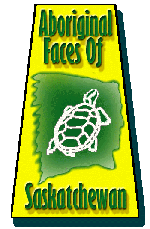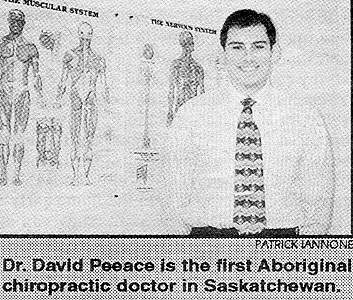|
 |
||||||||
Chiropractor first Aboriginal to practice in province By Patrick Iannone Reprinted
with permission from
By becoming a doctor of chiropractic, he feels he has succeeded in finding union between a holistic approach to health reflective of his Aboriginal traditions and the science of medicine. After receiving his Bachelor of Science degree in physiology, from the University of Saskatchewan, Peeace first contemplated a career in medicine. However, after injuring his back as a result of summer working planting trees, Peeace visited a chiropractor seeking some relief from his discomfort. He was immediately impressed with the thoroughness of the examination and with the holistic approach taken by the chiroprator. Through his experience as a patient, he learned for the first time the scope of a chiropractor's practice in the nineties. Historically, chiropractors have solely manipulated the spinal column to alleviate pain. Today the chiropractor can successfully treat many sports related injuries, muscular or skeletal pain as well as bed wetting and asthma. This positive and eye opening experience as a patient led him to choose the career of chiropractic medicine. Peeace recently returned to Saskatchewan and is sharing a practice at a local clinic here. Even though the city practice is busy, he is committed to spending one half day at his reserve, at Kelvington near Yorkton. Although his Band had been instrumental in his success, via their monetary support, there is no obligation for him to practice on his Yellowquill Reserve. "But it is something I just have to do," said Peeace. "By working on the reserve I hope to encourage young students to stay in school, to have a focus and goals." Peeace would like to see more Aboriginal people involved in health care. It would benefit all First Nations, especially those requiring services on the reserves, to have a commonality between the care giver and themselves. "Although I don't always see myself as a role model, I do hope that my shared experience will benefit youth and I hope to promote staying in school when the pressure of peers are rampant," he said. |
|||||||||








 Dr. L.
David Peeace, 26, is a recent graduate from an Oregon
Chiropractic school. He is the first and only Aboriginal
chiropractor in Saskatchewan.
Dr. L.
David Peeace, 26, is a recent graduate from an Oregon
Chiropractic school. He is the first and only Aboriginal
chiropractor in Saskatchewan.